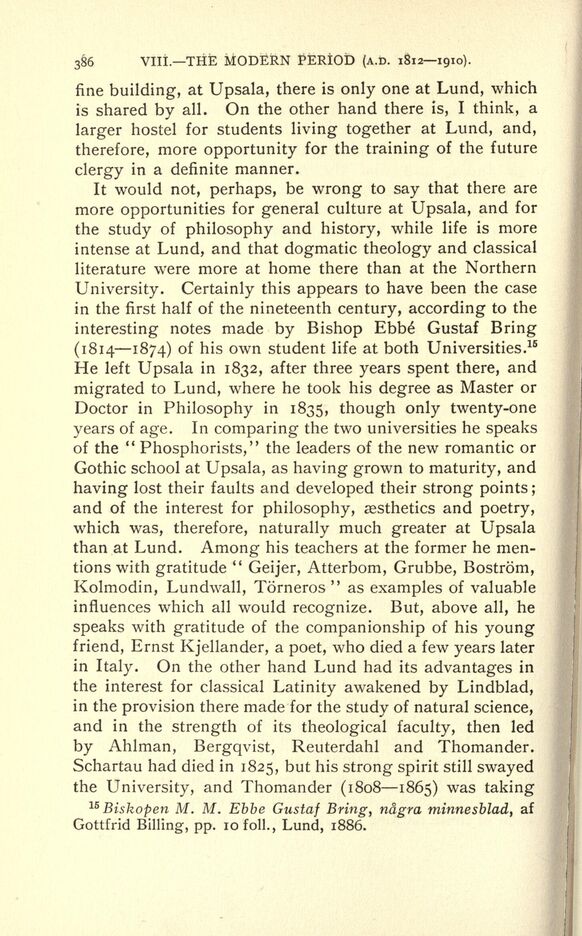
Full resolution (JPEG) - On this page / på denna sida - VIII. The Church in the last century (1811—1910 A.D.)

<< prev. page << föreg. sida << >> nästa sida >> next page >>
Below is the raw OCR text
from the above scanned image.
Do you see an error? Proofread the page now!
Här nedan syns maskintolkade texten från faksimilbilden ovan.
Ser du något fel? Korrekturläs sidan nu!
This page has never been proofread. / Denna sida har aldrig korrekturlästs.
386 VIII. THE MODERN PERIOD (A.D. iSi2 1910).
fine building, at Upsala, there is only one at Lund, which
is shared by all. On the other hand there is, I think, a
larger hostel for students living together at Lund, and,
therefore, more opportunity for the training of the future
clergy in a definite manner.
It would not, perhaps, be wrong to say that there are
more opportunities for general culture at Upsala, and for
the study of philosophy and history, while life is more
intense at Lund, and that dogmatic theology and classical
literature were more at home there than at the Northern
University. Certainly this appears to have been the case
in the first half of the nineteenth century, according to the
interesting notes made by Bishop Ebbe" Gustaf Bring
(1814 1874) of his own student life at both Universities.
15
He left Upsala in 1832, after three years spent there, and
migrated to Lund, where he took his degree as Master or
Doctor in Philosophy in 1835, though only twenty-one
years of age. In comparing the two universities he speaks
of the
"
Phosphorists," the leaders of the new romantic or
Gothic school at Upsala, as having grown to maturity, and
having lost their faults and developed their strong points ;
and of the interest for philosophy, aesthetics and poetry,
which was, therefore, naturally much greater at Upsala
than at Lund. Among his teachers at the former he men
tions with gratitude
"
Geijer, Atterbom, Grubbe, Bostrom,
Kolmodin, Lundwall, Torneros
"
as examples of valuable
influences which all would recognize. But, above all, he
speaks with gratitude of the companionship of his young
friend, Ernst Kjellander, a poet, who died a few years later
in Italy. On the other hand Lund had its advantages in
the interest for classical Latinity awakened by Lindblad,
in the provision there made for the study of natural science,
and in the strength of its theological faculty, then led
by Ahlman, Bergqvist, Reuterdahl and Thomander.
Schartau had died in 1825, but his strong spirit still swayed
the University, and Thomander (1808 1865) was taking
15
Biskopen M. M. Ebbe Gustaf Bring, ndgra minnesblad, af
Gottfrid Billing, pp. lofoll., Lund, 1886.
<< prev. page << föreg. sida << >> nästa sida >> next page >>